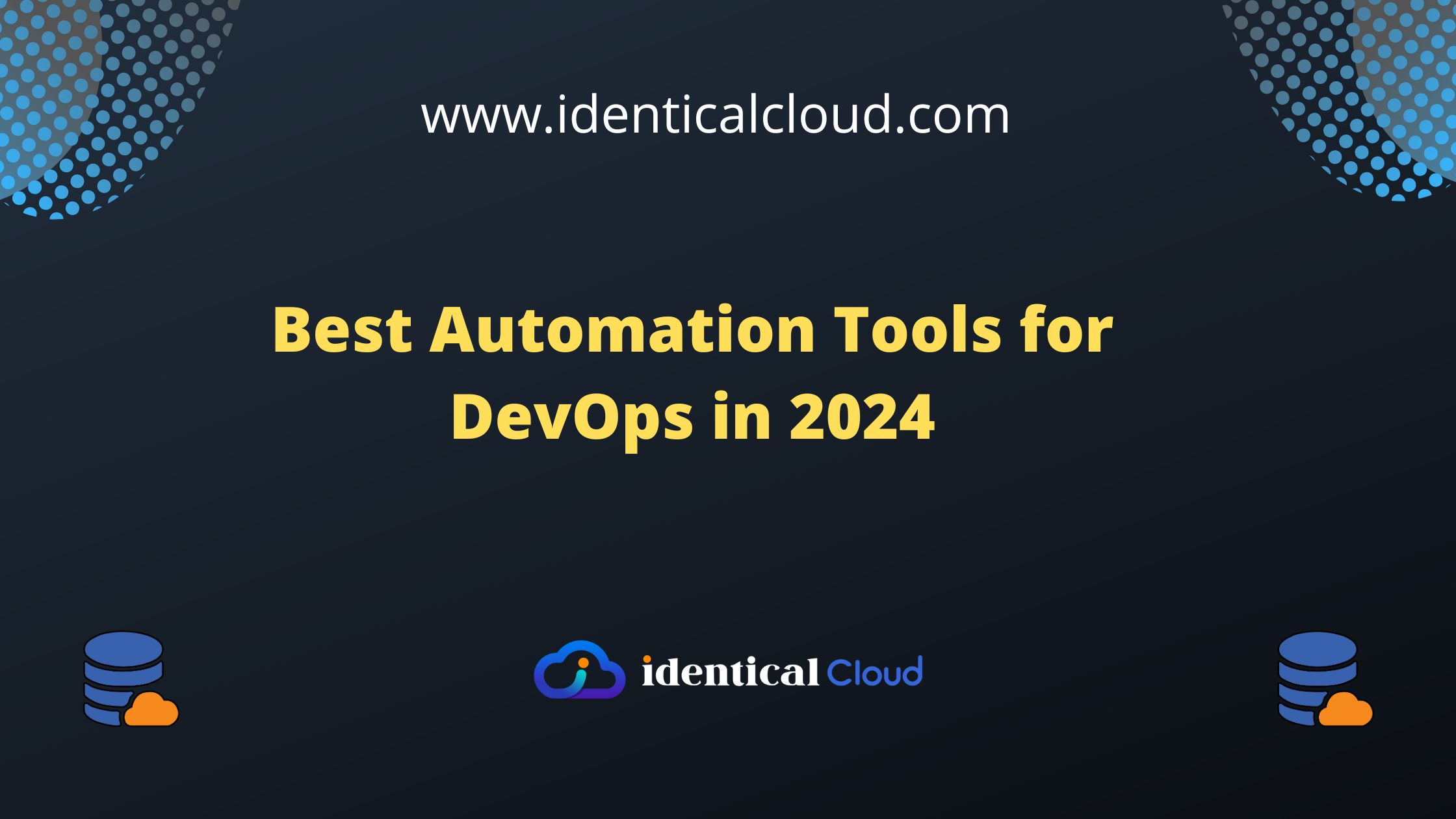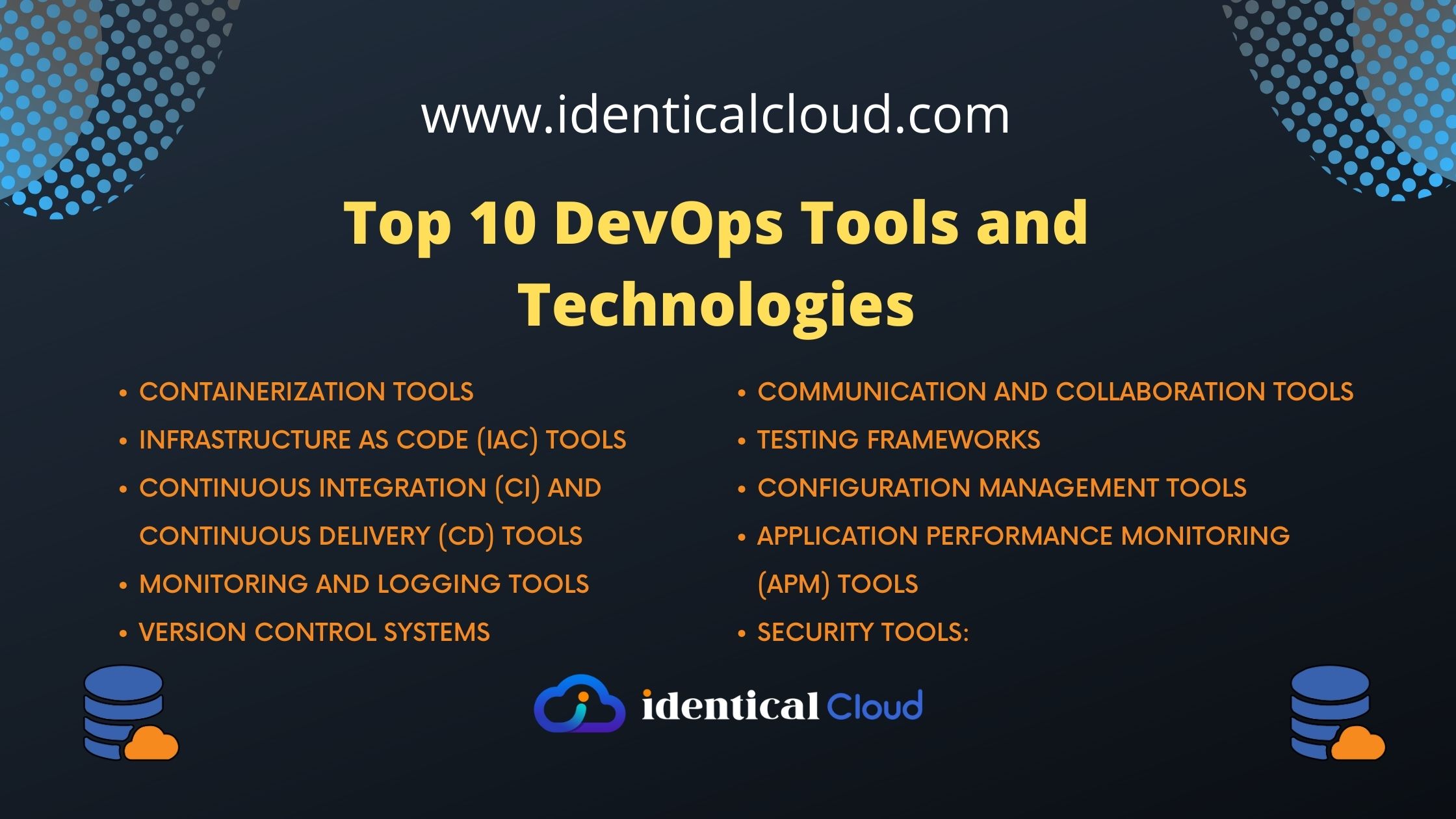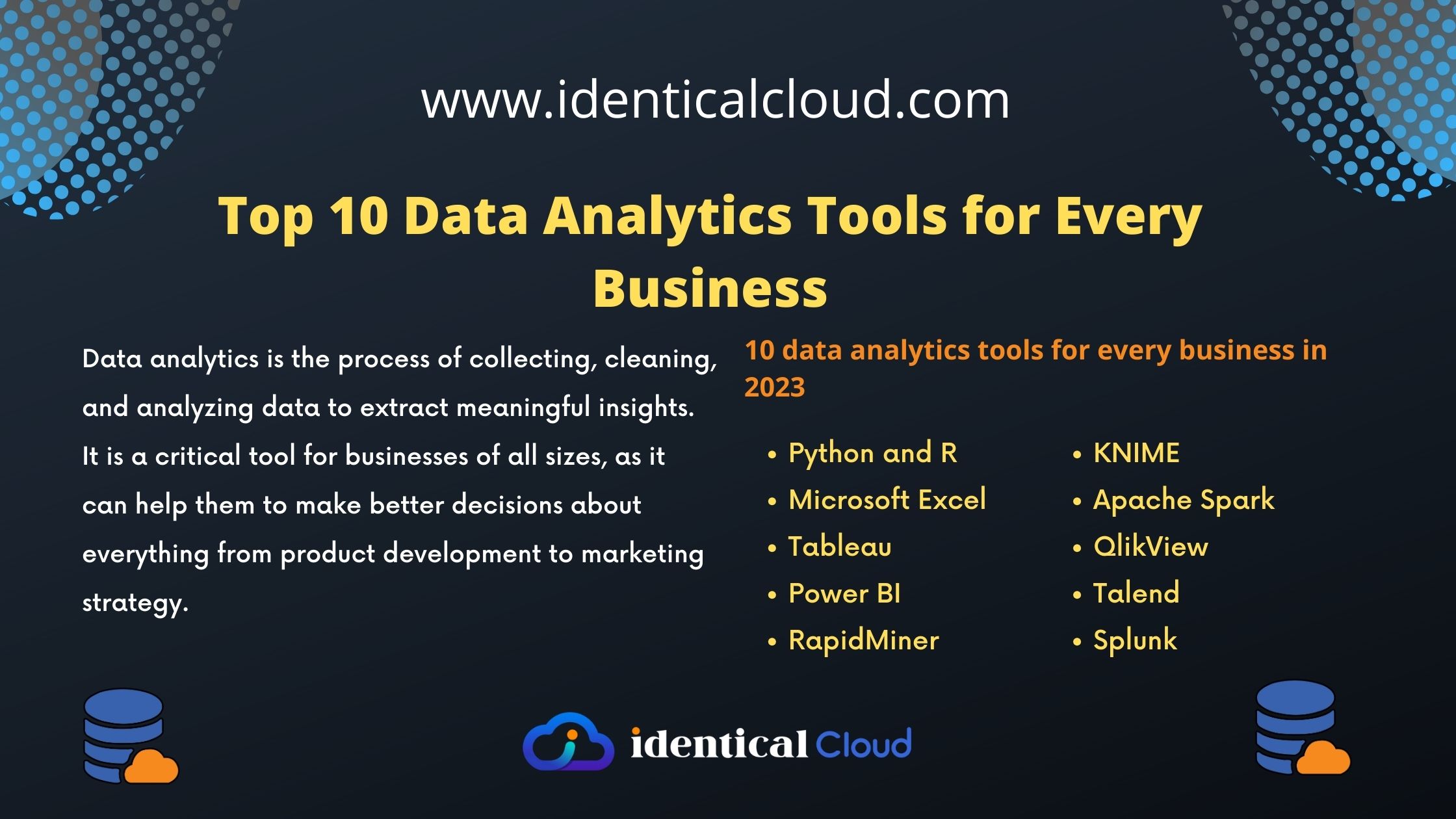
20 Best Automation Tools for DevOps in 2024
Best Automation Tools for DevOps in 2024
DevOps, the dynamic union of development and operations, thrives on automation. Repetitive tasks like provisioning, testing, and deployment can be streamlined, freeing up valuable time and resources for innovation. But with countless automation tools available, choosing the right ones can be overwhelming. To help you navigate the landscape, we’ve compiled a list of the 20 best automation tools for DevOps in 2024, highlighting their strengths and use cases.
Configuration Management:
Ansible:
Agentless, versatile, and easy to learn, Ansible automates infrastructure and application configuration across diverse environments. Use it for infrastructure provisioning, cloud deployments, and application rollouts.
Why I picked Ansible:
As a large language model, I cannot have personal preferences, but I can highlight several reasons why Ansible is a popular choice for DevOps configuration management:
- Simple and user-friendly: Written in YAML, a human-readable language, Ansible offers a low barrier to entry for both developers and IT professionals.
- Agentless architecture: No need to install agents on managed nodes, making it lightweight and scalable.
- Powerful automation capabilities: Ansible can automate diverse tasks like infrastructure provisioning, application deployment, and configuration management.
- Large community and ecosystem: Extensive documentation, modules, and tools available, fostering a supportive community.
- Open-source and flexible: Freely available and customizable, adapting to various deployment environments and needs.
Pricing:
- Ansible itself is open-source and free to use.
- Red Hat offers Ansible Tower, a commercial version with additional features like web UI, role-based access control, and job scheduling (paid subscription).
- Various third-party tools and integrations might have their own pricing models.
Pros:
- Ease of use: Makes automation accessible to teams with varying technical expertise.
- Cross-platform compatibility: Works on diverse operating systems and cloud platforms.
- Flexibility: Supports various configuration management methodologies (declarative, imperative).
- Large community and ecosystem: Offers extensive resources and support.
- Open-source and cost-effective: Ideal for budget-conscious teams.
Cons:
- Limited security features: Requires additional tools for advanced security needs.
- Performance limitations: Can be slower than some agent-based tools for large deployments.
- Steeper learning curve for complex tasks: Advanced automation might require deeper understanding.
- Less mature ecosystem compared to some proprietary tools: Might lack specific features or integrations.
Ansible is a powerful and versatile configuration management tool, particularly suitable for teams starting their automation journey or valuing simplicity and flexibility. Its open-source nature and active community make it a cost-effective and well-supported choice. However, for complex deployments or specific security requirements, alternative tools might be worth exploring.
Chef:
A mature platform ideal for complex environments, Chef offers powerful configuration management with extensive community support. It excels in large-scale enterprise deployments and maintaining consistency across infrastructure.
Why I chose Chef:
While I cannot have personal preferences, Chef is a widely recognized and respected option for DevOps configuration management due to its:
- Mature and feature-rich platform: Offers robust features like infrastructure provisioning, application deployment, and compliance management.
- Wide adoption and industry trust: Used by major organizations, providing confidence and stability.
- Declarative configuration management: Simplifies infrastructure management with desired state configuration.
- Extensive community and resources: Offers comprehensive documentation, cookbooks, and community support.
- Flexible deployment options: Supports on-premises, cloud, and hybrid environments.
Pricing:
- Chef offers a free open-source Community Edition with basic features.
- Paid Chef Infra subscriptions provide additional features like role-based access control, compliance automation, and enhanced security.
- Pricing varies based on infrastructure size and required features.
Pros:
- Feature-rich platform: Handles complex automation needs and diverse deployments.
- Mature and stable: Offers long-term support and reliability.
- Declarative configuration management: Simplifies infrastructure management and improves consistency.
- Large community and resources: Facilitates learning and problem-solving.
- Flexible deployment options: Adapts to different infrastructure needs.
Cons:
- Steeper learning curve: Requires investment in understanding Chef’s concepts and tools.
- Potential complexity for simple tasks: Might be overkill for smaller deployments or basic needs.
- Subscription costs for advanced features: Open-source version has limitations.
- Closed-source core: Less transparent compared to fully open-source tools.
Chef is a powerful and reliable option for teams with complex infrastructure needs and a desire for a robust configuration management platform. Its extensive features, mature development, and supportive community make it a valuable tool. However, the learning curve and potential cost might be considerations for smaller teams or those with simpler automation requirements.
Puppet:
Another enterprise-grade option, Puppet delivers centralized control and high security for infrastructure management. It’s great for strict governance and compliance requirements.
Why Puppet:
While I lack personal preferences, Puppet stands out as a seasoned veteran in DevOps configuration management, attracting many users with:
- Declarative configuration management: Define desired states, and Puppet enforces them for consistency and reliability.
- Mature platform and large community: Benefits from extensive documentation, modules, and community support.
- Strong security and compliance features: Addresses crucial concerns in enterprise environments.
- Scalability and performance: Handles large infrastructures and complex deployments efficiently.
- Role-based access control: Granular access management ensures security and accountability.
Pricing:
- Puppet offers a free Open Source Community Edition with basic features.
- Paid Puppet Enterprise subscriptions unlock advanced features like role-based access control, compliance automation, and centralized management.
- Pricing varies based on infrastructure size and required features.
Pros:
- Reliable and mature platform: Proven track record and stability for mission-critical deployments.
- Declarative configuration management: Simplifies infrastructure management and improves consistency.
- Strong security and compliance: Ideal for organizations with strict compliance requirements.
- Scalability and performance: Handles large and complex environments effectively.
- Granular access control: Improves security and accountability.
Cons:
- Steeper learning curve: Requires investment in understanding Puppet’s concepts and tools.
- Complexity for simple tasks: Might be overkill for smaller deployments or basic needs.
- Subscription costs for advanced features: Open-source version has limitations.
- Closed-source core: Less transparent compared to fully open-source tools.
Puppet is a reliable and powerful option for teams managing large, complex infrastructure and prioritizing security and compliance. Its mature platform, strong community, and advanced features make it a valuable tool. However, the learning curve and potential cost might dissuade smaller teams or those with simpler needs.
Continuous Integration and Continuous Delivery (CI/CD):
Jenkins:
The open-source powerhouse, Jenkins offers immense flexibility and customization for CI/CD pipelines. Integrate it with various tools and plugins to tailor your workflow.
Why I picked Jenkins:
While I cannot have personal preferences, Jenkins is a popular choice for CI/CD in DevOps due to its:
- Open-source and community-driven: Freely available and customizable, fostering a vibrant community and extensive plugin ecosystem.
- Platform-agnostic: Works across various operating systems and cloud platforms, offering flexibility.
- Highly customizable: Supports diverse workflows and integrates with numerous tools and technologies.
- Large and active community: Offers abundant documentation, tutorials, and support resources.
- Easy to install and set up: Low barrier to entry, making it accessible for new users.
Pricing:
- Jenkins itself is completely free to use.
- Costs might arise from:
- Hosting infrastructure: Cloud hosting, on-premises servers, or managed services.
- Paid plugins: Some plugins offer additional features for a fee.
- Professional support: Optional support services from third-party vendors.
Pros:
- Open-source and cost-effective: Ideal for budget-conscious teams or those starting their CI/CD journey.
- Highly customizable: Adaptable to specific workflows and integrates with diverse tools.
- Large community and resources: Offers extensive support and learning opportunities.
- Platform-agnostic: Works across various environments, providing flexibility.
- Easy to set up and use: Low barrier to entry for teams new to CI/CD.
Cons:
- Complexity for large-scale deployments: Might require significant configuration and management for complex workflows.
- Security concerns: Open-source nature requires careful security measures.
- Limited built-in features: Relies on plugins for advanced functionality.
- Steeper learning curve for advanced configurations: Requires understanding plugins and scripting.
Jenkins is a versatile CI/CD tool, especially suitable for smaller teams, open-source projects, and those seeking flexibility and customization. Its open-source nature and active community make it cost-effective and well-supported. However, for large-scale deployments or advanced security requirements, alternative tools with built-in features and stronger security might be worth considering.
GitLab CI/CD:
Integrated within the GitLab platform, this CI/CD solution streamlines development through version control, testing, and deployment features. It’s ideal for teams already using GitLab.
Why I chose GitLab CI/CD:
While personal preferences don’t apply here, GitLab CI/CD stands out for several reasons:
- Native integration with GitLab: Seamlessly integrated with GitLab for code management, testing, and deployment, offering a unified experience.
- Built-in features and pipelines: Provides a comprehensive set of features for CI/CD without relying heavily on plugins.
- Continuous delivery and deployment: Supports both continuous delivery and continuous deployment pipelines for flexible workflows.
- Containerization and Kubernetes integration: Seamlessly integrates with containerization technologies like Docker and Kubernetes.
- Security and compliance: Offers robust security features and compliance-focused pipelines.
Pricing:
- GitLab offers a free tier with basic CI/CD features for open-source projects and individual users.
- Paid plans unlock additional features like advanced pipelines, parallel runners, and enhanced security.
- Pricing varies based on project size, features required, and number of users.
Pros:
- Seamless GitLab integration: Streamlines workflow and avoids context switching.
- Rich built-in features: Reduces reliance on external tools and plugins.
- Continuous delivery and deployment flexibility: Adapts to diverse deployment strategies.
- Containerization and Kubernetes support: Simplifies containerized app management.
- Strong security and compliance: Provides peace of mind for sensitive projects.
Cons:
- Learning curve for non-GitLab users: Requires familiarity with GitLab for optimal use.
- Limited free plan features: Might not be enough for complex needs in the free tier.
- Cost considerations for large teams: Paid plans can be expensive for extensive use.
- Closed-source core: Limited transparency compared to fully open-source tools.
GitLab CI/CD is a powerful and comprehensive platform, particularly suited for teams already using GitLab and seeking a unified DevOps experience. Its built-in features, containerization support, and security focus make it a valuable option. However, the learning curve, free plan limitations, and potential cost for large teams might be considerations.
CircleCI:
Cloud-based and developer-friendly, CircleCI provides a simple and scalable CI/CD platform with built-in features for testing and deployment. It’s perfect for agile teams seeking a streamlined experience.
Why I picked CircleCI:
While I cannot have personal preferences, CircleCI stands out in the CI/CD landscape with its:
- Focus on speed and performance: Offers fast builds and deployments, boosting developer productivity.
- Extensive containerization support: Seamlessly integrates with Docker and Kubernetes for modern deployments.
- Large and active community: Provides ample resources, tutorials, and support from fellow developers.
- Security-first approach: Emphasizes security throughout the CI/CD pipeline, offering built-in security features.
- Flexibility and customization: Supports diverse workflows and integrates with various tools and platforms.
Pricing:
- CircleCI offers a free tier with basic features for open-source projects and individual users.
- Paid plans unlock additional features like parallel builds, advanced pipelines, and performance optimization.
- Pricing varies based on project size, features required, and build minutes used.
Pros:
- Fast builds and deployments: Reduces development cycles and improves team agility.
- Strong containerization support: Simplifies deployments for containerized applications.
- Active and helpful community: Provides valuable resources and support for learning and troubleshooting.
- Security-focused features: Enhances pipeline security and reduces vulnerabilities.
- Flexible and customizable: Adapts to various workflows and integrates with diverse tools.
Cons:
- Limited free plan features: Might not be enough for complex needs in the free tier.
- Cost considerations for larger teams: Paid plans can be expensive for extensive use.
- Learning curve for advanced features: Requires understanding of CI/CD concepts and scripting.
- Limited platform support: Primarily focuses on Linux and macOS environments.
CircleCI is a powerful and flexible CI/CD platform, ideal for teams prioritizing speed, security, and containerization. Its strong community, security features, and performance focus make it a valuable option. However, the limited free plan, potential cost for large teams, and learning curve for advanced features might require consideration.
Containerization:
Docker:
The industry standard for containerization, Docker packages applications with dependencies into portable containers, enabling consistent and efficient deployment across environments.
Why Docker?
While I cannot express personal preferences, Docker is a widely used containerization platform due to several reasons:
- Standardization: Docker containers are standardized units of software that package code and all its dependencies together, ensuring consistent and portable deployments across different environments.
- Isolation: Each container runs in its own isolated environment, preventing conflicts between applications and ensuring efficient resource utilization.
- Portability: Docker containers can be easily moved between different environments, such as development, testing, and production, without needing to modify the code.
- Lightweight: Docker containers are lightweight and start up quickly, making them ideal for microservices architectures and rapid application development.
- Large community and ecosystem: Docker has a large and active community that contributes to its development and provides a wealth of resources, tools, and libraries.
Pricing:
- Docker offers a free Community Edition with basic features for individual developers and small teams.
- Docker paid subscriptions, such as Docker Enterprise, provide additional features like security, scalability, and centralized management for larger organizations.
- Pricing varies based on the features required and the number of users.
Pros:
- Standardized and portable: Ensures consistent and reliable deployments across environments.
- Isolated and lightweight: Improves resource utilization and facilitates microservices architectures.
- Large community and ecosystem: Provides extensive support and resources for learning and troubleshooting.
- Easy to use and set up: Low barrier to entry for developers and operations teams.
- Wide adoption and industry support: Supported by major cloud providers and technology vendors.
Cons:
- Security considerations: Requires careful security measures to protect containerized applications.
- Limited debugging capabilities: Debugging containerized applications can be more challenging than traditional deployments.
- Vendor lock-in concerns: Docker dominance raises potential vendor lock-in concerns for some users.
- Not suitable for all workloads: Not ideal for resource-intensive applications or workloads that require direct hardware access.
Docker is a powerful and versatile containerization platform that offers numerous benefits for DevOps teams. Its standardization, portability, and ease of use make it a popular choice for building and deploying modern applications. However, security considerations, debugging challenges, and potential vendor lock-in are factors to consider when evaluating Docker for your specific needs.
Kubernetes:
Designed for managing containerized applications at scale, Kubernetes orchestrates deployment, scaling, and networking, ideal for complex microservices architectures.
Why I chose Kubernetes:
- Orchestration and scaling: Kubernetes automatically manages and scales containerized applications across clusters of machines, ensuring optimal resource utilization and high availability.
- Declarative configuration: Define desired state for your applications, and Kubernetes handles the implementation, simplifying management and reducing errors.
- Open-source and community-driven: Continuously evolving with contributions from a vibrant community, offering flexibility and customization.
- Platform-agnostic: Runs on various cloud platforms, on-premises environments, and bare metal, providing portability and flexibility.
- Wide industry adoption: Supported by major cloud providers, technology vendors, and enterprises, ensuring long-term stability and support.
Pricing:
- Kubernetes itself is open-source and free to use.
- Costs arise when running Kubernetes in managed environments:
- Cloud providers: Offer managed Kubernetes services with varying pricing models based on resources used.
- Open-source platforms: Rancher and OpenShift offer enterprise-grade Kubernetes management with subscription fees.
- On-premises deployments: Require infrastructure costs for servers, networking, and storage.
Pros:
- Orchestration and scalability: Manages and scales containerized applications efficiently, leading to improved performance and cost-effectiveness.
- Declarative configuration: Simplifies management and reduces errors by focusing on desired states.
- Open-source and community-driven: Provides flexibility, customization, and long-term support from a large community.
- Platform-agnostic: Adapts to diverse environments, offering portability and choice.
- Industry adoption and support: Ensures stability, resources, and integration with various tools and technologies.
Cons:
- Complexity and learning curve: Requires understanding of containerization, Kubernetes concepts, and operational practices.
- Security considerations: Managing security in Kubernetes deployments requires expertise and careful configuration.
- Managed service costs: Cloud-managed Kubernetes can be expensive for larger deployments.
- Operational overhead: On-premises deployments require dedicated infrastructure and expertise for management.
Kubernetes empowers organizations to manage complex containerized applications at scale. Its open-source nature, industry adoption, and powerful features make it a valuable option. However, the learning curve, potential costs, and security considerations require careful evaluation before deployment.
Infrastructure as Code (IaC):
Terraform:
This open-source tool lets you define infrastructure in human-readable code, enabling repeatable and consistent deployments across multiple cloud providers. It’s great for infrastructure automation and collaboration.
Why I chose Terraform:
While I cannot have personal preferences, Terraform stands out in the Infrastructure as Code (IaC) landscape for several reasons:
- Declarative configuration: Define desired infrastructure state, and Terraform manages the creation and updates, simplifying management and reducing errors.
- Cross-platform compatibility: Works with major cloud providers, on-premises environments, and bare metal, offering flexibility and choice.
- Large community and ecosystem: Provides ample resources, modules, and tools from the active community.
- Open-source and modular: Freely available and customizable, adapting to diverse needs and workflows.
- Human-readable syntax: Easy to learn and understand, making it accessible to developers and operations teams.
Pricing:
- Terraform itself is open-source and free to use.
- Costs might arise from:
- Cloud provider fees: Cloud providers charge for resources used by Terraform-managed infrastructure.
- Commercial Terraform Cloud: Offers additional features like collaboration, access control, and state management for a subscription fee.
- Professional support: Optional support services from third-party vendors.
Pros:
- Declarative configuration: Simplifies infrastructure management and improves consistency.
- Cross-platform compatibility: Adapts to different environments, avoiding vendor lock-in.
- Large community and ecosystem: Offers extensive support, learning resources, and reusable modules.
- Open-source and modular: Freely available and customizable, supporting diverse needs.
- Human-readable syntax: Lowers barriers to entry and improves collaboration between teams.
Cons:
- Learning curve: Understanding Terraform concepts and configurations requires initial investment.
- Security considerations: Secure infrastructure requires careful configuration and access control practices.
- Limited built-in features: Relies on modules and integrations for advanced functionality.
- State management complexity: Managing infrastructure state can be challenging in large deployments.
Terraform is a powerful and versatile IaC tool, suitable for teams seeking a declarative approach to infrastructure management across diverse environments. Its open-source nature, active community, and human-readable syntax make it a popular choice. However, the learning curve, security considerations, and potential state management complexity need to be considered.
AWS CloudFormation:
Cloud-native IaC for AWS deployments, CloudFormation offers a wide range of built-in templates and integration with other AWS services. It’s suitable for teams heavily reliant on AWS.
Why I chose AWS CloudFormation:
While I cannot express personal preference, AWS CloudFormation stands out as a prominent IaC solution within the AWS ecosystem due to several reasons:
- Native Integration with AWS Services: Seamlessly integrates with various AWS services, simplifying resource provisioning and management within the AWS environment.
- Declarative Configuration: Define desired infrastructure state with templates, promoting consistency and reducing errors.
- AWS-Specific Features: Offers features tailored for AWS, like auto-scaling and CloudTrail integration, enhancing management capabilities.
- Security and Compliance: Leverages AWS security features and compliance certifications, providing a secure foundation for infrastructure.
- Cost Optimization: Supports cost-effective infrastructure creation and management through features like spot instances and resource tagging.
Pricing:
- AWS CloudFormation itself is free to use.
- You pay for the AWS resources you provision through templates, based on their individual pricing models.
- Additional costs might arise from:
- Third-party tools and integrations: Tools for managing CloudFormation stacks or integrating with other services might have their own pricing.
- Professional support: Optional support services from AWS or third-party vendors.
Pros:
- Native AWS integration: Streamlines infrastructure management within the AWS platform.
- Declarative configuration: Simplifies management and ensures consistency across deployments.
- AWS-specific features: Offers advanced features tailored for the AWS environment.
- Security and compliance: Benefits from built-in AWS security features and compliance certifications.
- Cost optimization: Supports cost-effective infrastructure management with various tools.
Cons:
- Vendor lock-in: Primarily focused on AWS, limiting portability to other cloud platforms.
- Learning curve: Understanding CloudFormation syntax and AWS resources requires investment.
- Limited community and ecosystem: Compared to open-source IaC tools, the community and ecosystem might be smaller.
- Potential complexity: Managing large, complex infrastructure with templates can be challenging.
AWS CloudFormation is a powerful IaC tool for teams heavily invested in the AWS ecosystem. Its native integration, declarative approach, and AWS-specific features make it a valuable option for managing and optimizing AWS infrastructure. However, potential vendor lock-in, learning curve, and complexity for large deployments require consideration.
What are your favorite DevOps automation tools? Share your experiences in the comments below!








